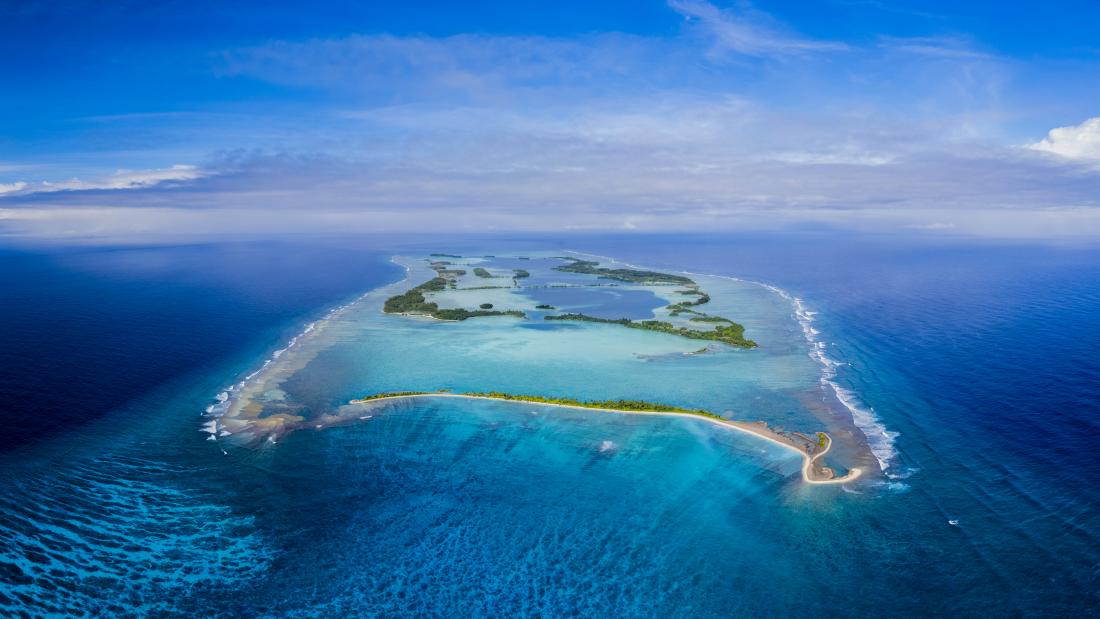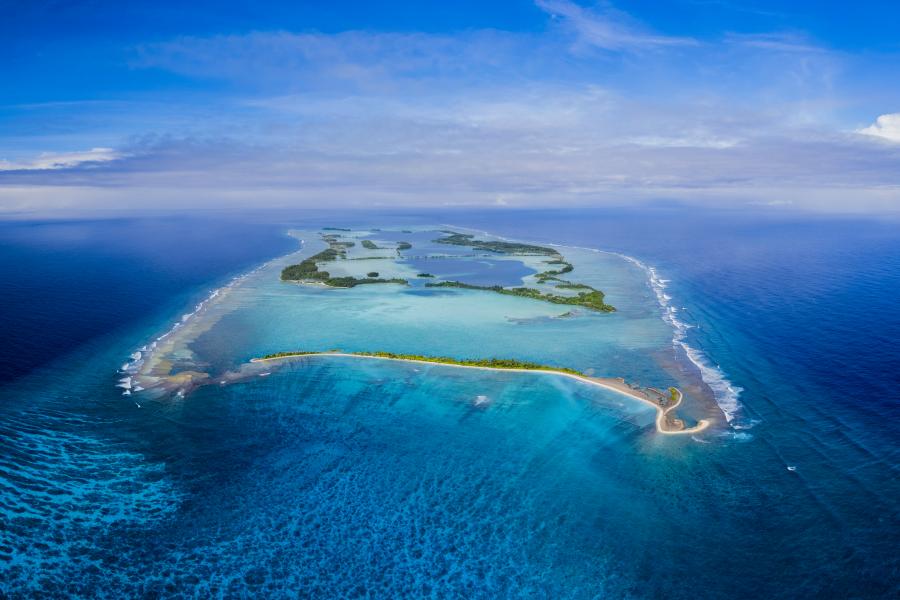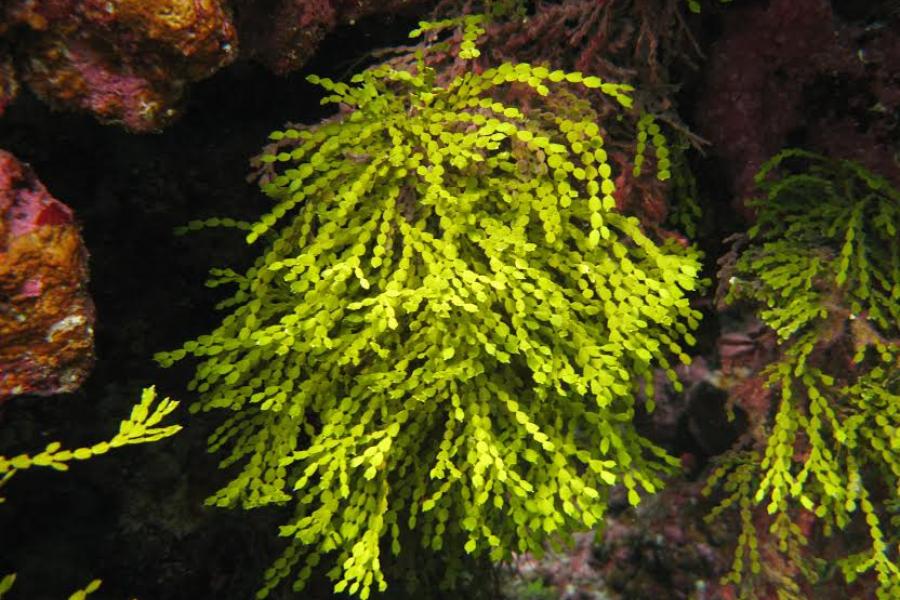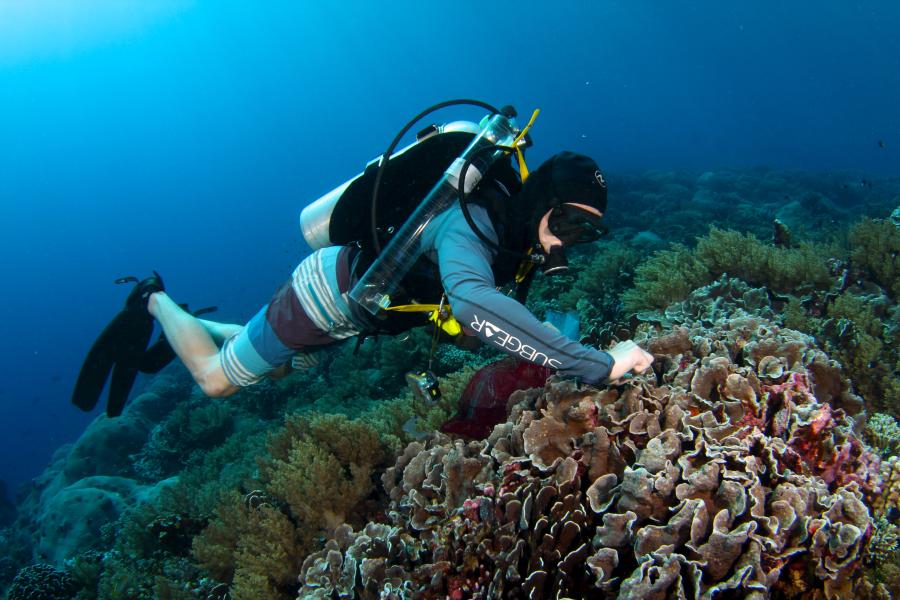While many of the world’s coral reefs are being badly affected by rising ocean temperatures and events such as El Niño (caused by warmer than usual water in parts of the Pacific Ocean, between South America and Australia, that create unusually hot and stormy weather), others have emerged from these ‘marine heatwaves’ in far better condition than expected.
New research published in Science Advances has thrown light on why some reefs survive, and even benefit from El Niño induced marine heatwaves.
An international team of oceanographers and marine biologists including two from Bangor University’s School of Ocean Sciences in the UK, studied forty years of data, in particular that of the 2015-16 El Niño event, to identify changing ocean processes.
Complex interactions at large distances away in the mid ocean are affecting coral reefs.
The researchers identified change to water cycling patterns in the mid-Pacific Ocean during El Niño which explains why some reefs fare better under El Niño conditions.
During El Niño, the ocean current at the equator is weakened, reducing the beneficial nutrients that are typically brought to the surface via upwelling when this current is flowing strongly.
But further north, the researchers found that the eastward-flowing North Equatorial Counter Current, which hits western shores of Palmyra Atoll, an uninhabited reef in the remote central Pacific Ocean, was significantly strengthened during the 2015-16 El Niño. This, together with the shallowing of the ocean mixed layer around Palmyra (the barrier to upwelling), promoted the upward movement of cooler plankton-rich waters to the island’s shallow coral reefs. This process enabled the reefs to better manage the heat stress brought on by the rise in ocean temperature during the 2015-16 marine heatwave.
Dr Gareth Williams of Bangor University’s School of Ocean Sciences and one of the paper’s principal authors, explains,
“Heat stress as experienced during an El Niño event can cause coral bleaching, a breakdown of the mutualistic relationship between the coral animal and its algal endosymbionts. A prolonged breakdown in this relationship often results in coral starvation and death, as much of the energetic demands of corals are met by the photosynthetic activity of its endosymbionts. However, the changed oceanographic processes observed in 2015-16 delivered 1000 times more upwelling than normal during the period of peak heat stress. By looking at chemical changes in the coral tissues, we found evidence that this enhanced upwelling brought food from deeper waters up into the shallows and provided the corals with an alternative energy source that likely helped them survive.”
Palmyra Atoll, mid-Pacific Ocean
“Looking back, we found these same oceanographic changes occurred at Palmyra during the last three major El Niño events of the last half-century. This might help to explain why Palmyra has persisted so well, despite periods of intense ocean warming.”
Dr Michael Fox, of King Abdullah University of Science and Technology and lead author of the paper said,
“El Niño-associated heatwaves are the greatest threat to coral reef ecosystems globally. These events have far-reaching impacts across the tropics and can result in mass coral mortality across vast areas. Our results show that there are likely other reefs across the Pacific that benefit from a similar set of oceanographic conditions. Understanding where these are and whether these conditions facilitate coral reef persistence will help us identify which reefs have a greater chance of survival under climate change and to plan future conservation efforts.”




